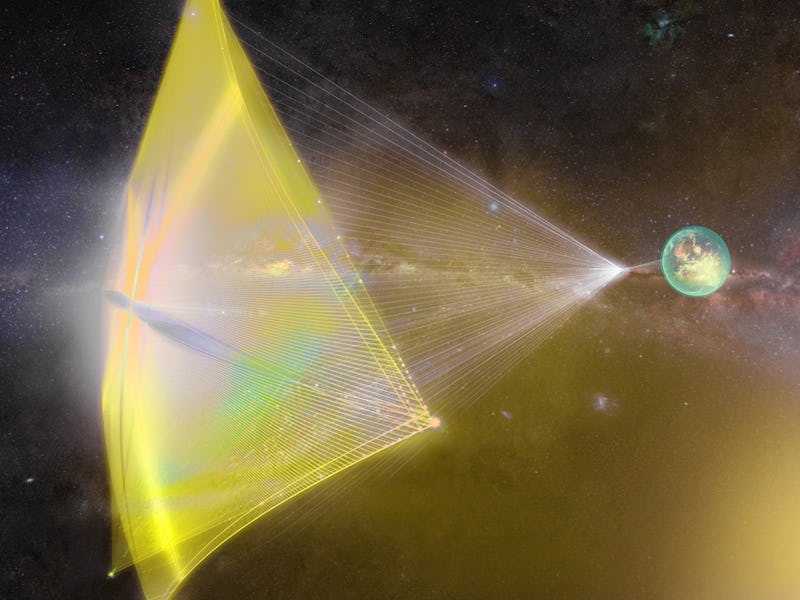Yuri Milner's Starshot Won’t Find Alien Life, but Will Open the Final Frontier
Experts say that, despite what we've been told, finding extraterrestrial life is not the primary goal of the $100 million mission.

Billionaire Yuri Milner has never been shy about his desire to find extraterrestrials. He dropped $100 million of his own money last year into SETI (search for extraterrestrial intelligence) research last year. Then he did it again last week, announcing the formation — with Stephen Hawking and Mark Zuckerberg — of the Breakthrough Starshot program, an ambitious initiative to launch gram-sized spacecraft toward Alpha Centauri on laser-powered lightsails. Starshot is fascinating as a project, but it’s important to understand that it won’t find life — and why Milner may not care.
For one thing, we don’t know if there are planets circling Alpha Centauri’s three suns. All we really know about the star system is there are three stars, and it’s just 4.37 light-years away and that there could be something there. Seth Shostak, Director of the Center of SETI Research at the SETI Institute bets the system contains interesting heavenly bodies — if not living ones. Some estimates put the odds of finding a habitable, Earth-like Alpha Centaurian world at around 85 percent. Shostak finds this credible. So does NASA scientist Eduardo Bendek, who may be the closest thing the Earth has to a local guide. Bendek, an Alpha Centauri expert, points out that the Starshot craft need to be aimed in a direction to do something and that we “don’t know specifically where to direct the nanocraft.”
Unfortunately, the size of the StarChips is also a double-edged sword. The goal is to fit four two-megapixel cameras on each tiny spaceship so they can snap up shots of the system and find planets. But, Shostak says, in all likelihood, the nanocraft will still be several million miles away from any planets or moons hanging around Alpha Centauri. The cameras will pick up “only a bright dot.” And that’s if the lightsails aren’t ripped to shreds by interstellar dust, which is far from unlikely. So why not just send a single space telescope as Bendek has proposed?
Shostak has what might be the only real answer to that question: “The public expects us to go to the stars.”
The Earth population seems to believe that the future of humanity lies in interstellar space and in order for us to pursue that future, we need to start extending our reach to both figure out what’s out there and figure out how we can become what’s out there. “This is the first step in realizing humanity’s dream,” Shostak says. “That’s the goal, despite current limitations.”
Shostak likens the project to Robert Scott’s journey to the South Pole. Did Scott accomplish many meaningful scientific objectives? No, he did not. But he proved that we could survive at the extremes of our terrestrial environment. Starshot could simply do us one further, allowing us to prove that we can extend ourselves into other solar systems if we’re willing to invest time and effort into new technologies and take massive risks not designed to wring the most research data out of a dollar, but to inspire.
“Successfully sending something the size of a silver dollar from here to Alpha Centauri will change us — all of us — in some way,” he says.